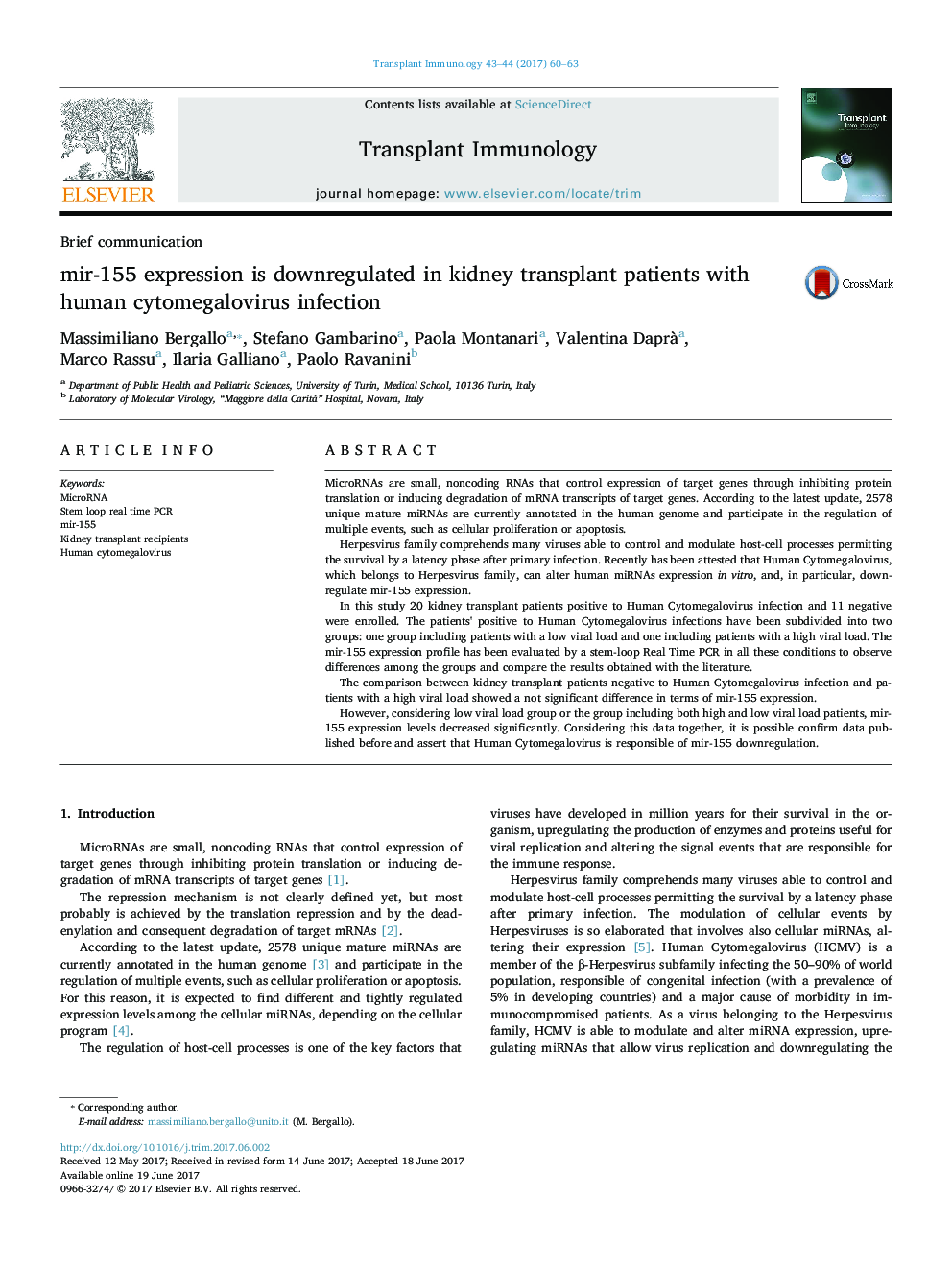| Article ID | Journal | Published Year | Pages | File Type |
|---|---|---|---|---|
| 5670442 | Transplant Immunology | 2017 | 4 Pages |
â¢We showed a significant reduction of mir-155 in HCMV infection compared to healthy patients.â¢No mir-155 statistical significant difference has been observed in patients with low or high HCMV viral load.â¢Patients negative to HCMV infection and patients with a high viral load showed a not difference in mir-155 expression.â¢In the group including both high and low CMV viral load, mir-155 levels decreased significantly.
MicroRNAs are small, noncoding RNAs that control expression of target genes through inhibiting protein translation or inducing degradation of mRNA transcripts of target genes. According to the latest update, 2578 unique mature miRNAs are currently annotated in the human genome and participate in the regulation of multiple events, such as cellular proliferation or apoptosis.Herpesvirus family comprehends many viruses able to control and modulate host-cell processes permitting the survival by a latency phase after primary infection. Recently has been attested that Human Cytomegalovirus, which belongs to Herpesvirus family, can alter human miRNAs expression in vitro, and, in particular, downregulate mir-155 expression.In this study 20 kidney transplant patients positive to Human Cytomegalovirus infection and 11 negative were enrolled. The patients' positive to Human Cytomegalovirus infections have been subdivided into two groups: one group including patients with a low viral load and one including patients with a high viral load. The mir-155 expression profile has been evaluated by a stem-loop Real Time PCR in all these conditions to observe differences among the groups and compare the results obtained with the literature.The comparison between kidney transplant patients negative to Human Cytomegalovirus infection and patients with a high viral load showed a not significant difference in terms of mir-155 expression.However, considering low viral load group or the group including both high and low viral load patients, mir-155 expression levels decreased significantly. Considering this data together, it is possible confirm data published before and assert that Human Cytomegalovirus is responsible of mir-155 downregulation.
